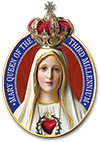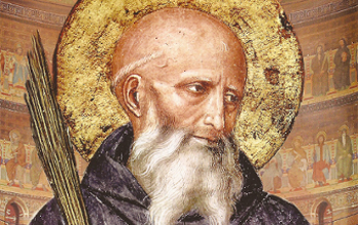The proud and once unbeaten Roman Empire crumbled under the devastating blows of the barbarian hordes. Armies and walls, institutions and customs, everything was swept by the rising tide of the new rulers.
“The ship is sinking!” Exclaimed Saint Jerome, who wrote sadly when he was informed of the fall of Rome: “My voice is extinguished, the sobs overwhelm my words. The illustrious capital of the empire has been taken!”
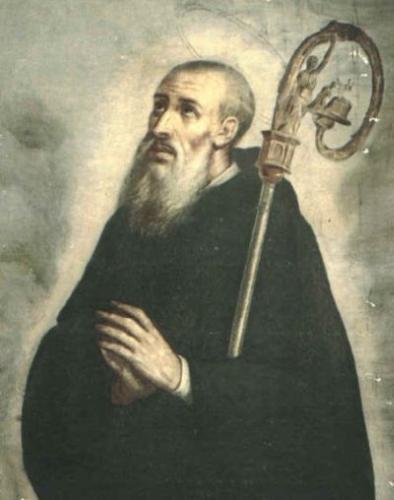
Civilization seemed to be extinguished in a dramatic sunset without hope.
Request your Saint Benedict Medal! Click here.
However, a star shone in the bewildering darkness, pointing out the true course of events: in the city of Hippo, surrounded by the Vandals, Saint Augustine wrote De civitate Dei (“The City of God”), proclaiming the irremediable wreck of the world born of paganism, while the City of God – the Holy Catholic Church – would not only never be destroyed, but would always triumph over any adversity.
But what means and what men would God use to bring order and splendor out of chaos?
Vocation of a Providential Man
In the evangelical times, the Divine Master had called obscure fishermen to be the columns of his Church. Now, the Holy Spirit chose a young man to renew this convulsive society and establish a new civilization.
However – oh paradox! – that boy, whose name was Benedict (Benito), born in 480 of a noble family of Nursia, felt the Lord’s call to follow him in silence and prayer.
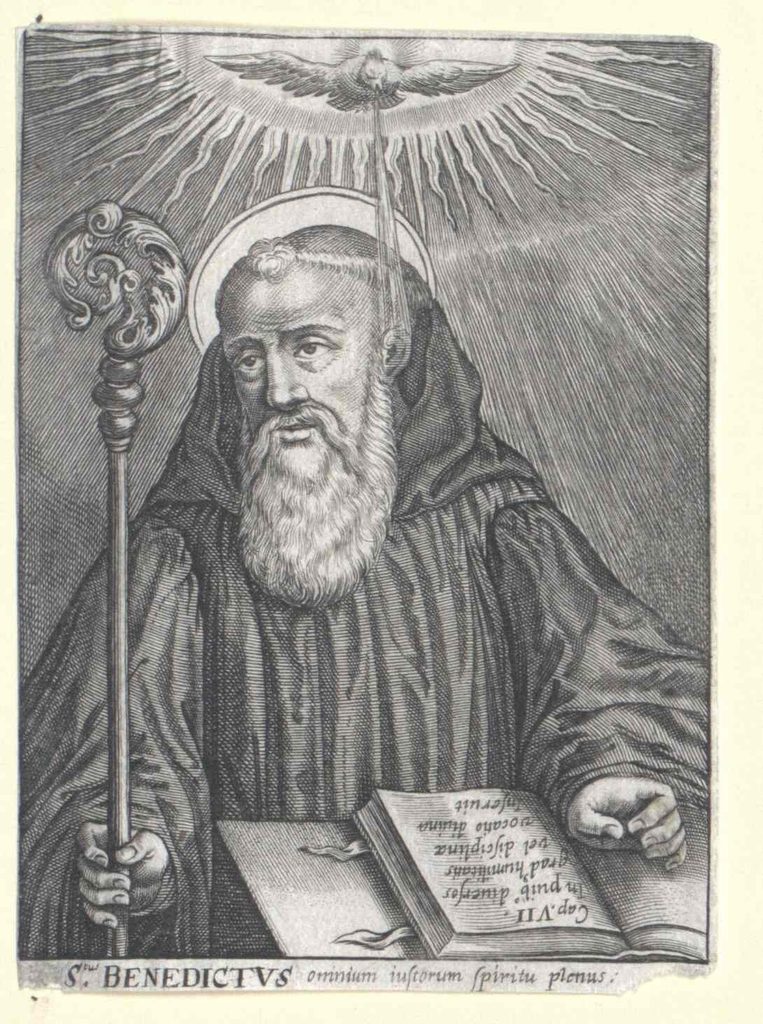
His parents sent him to study in Rome. But very soon he realized that, if he wanted to correspond to the supernatural longing that burned in his heart, he could not remain in that mare magnum, a mixture of barbarism and decadent Roman culture.
Thus, in the flower of youth and without ever having stained his baptismal innocence, he abandoned his home, possessions and studies in search of a barren place where he could acquire the knowledge and love of God.
“I wanted scorn more than the praises of the world”
The city of Enfide (now Affile), almost 50 km. of Rome, it was the place chosen for his recollection. There he settled with his old nurse, who provided him with domestic services.
A small home incident was the reason for his first miracle. One day he found his nurse crying because he had sloppily dropped a clay colander, which he had borrowed from a neighbor to strain the wheat. Pitying, Benito took the pieces from the strainer, put on prayer and the instrument was recomposed so perfectly, that it did not show the slightest sign of breaking.
Request your Saint Benedict Medal! Click here.
Immediately the news of the miracle spread, bringing him much fame. But he, who, according to St. Gregory the Great, “wanted more contempt than the praises of this world,” fled from the house of Enfide, seeking refuge in a solitary place called Subiaco, where he lodged in a tiny cave.
A great temptation, a definitive victory
On the way to Subiaco, he met Romano, a monk who lived in a nearby monastery. On certain days, Romano would pick up a piece of bread to Benito’s grotto. For a time this was the only food of the young hermit. But soon he became known in the region and many people, in search of food for their souls, brought him food for his body.
In this period the young man suffered the harshest temptations of the devil. Strongly tested on a certain occasion against the virtue of purity, he felt on the verge of giving up and even abandoning his solitude. But with the help of divine grace, he reacted, took off his clothes and threw himself on a thorn bush and nettles, against which he rubbed himself for a long time. He came out covered with wounds, but with his soul freed from temptation.
Attempt of poisoning
In the three years that he spent in that place of complete isolation, the fame of his sanctity spread. Having died the abbot of a nearby monastery, the monks came to ask him to take the vacancy. At the beginning Benito refused, but before the great insistence of the religious ended up accepting. After a time, however, those lukewarm monks decided to kill him, repented of bringing as superior to a man who demanded the path of perfection. They presented him with a pitcher of poisoned wine. The saint made a great sign of the cross and the vessel was torn apart.
Clearly understanding the meaning of the fact, that same day Benito left the cloister of relaxed monks and returned to the beloved solitude of his grotto.
Request your Saint Benedict Medal! Click here.
The Benedictine Order is born
The brilliance of his virtues and the fame of his miracles attracted many men, who with supernatural anxieties went to the cave to live under his guidance. Thus, successive communities were formed. San Benito erected a total of twelve monasteries in the place, choosing an abbot for each house. The Benedictine order had been founded.
At that time, Subiaco began to be visited by important people of Rome who brought their children to educate them according to the Benedictine spirit. Among these the holy abbot recruited two of his best disciples: St. Mauro and St. Placido.
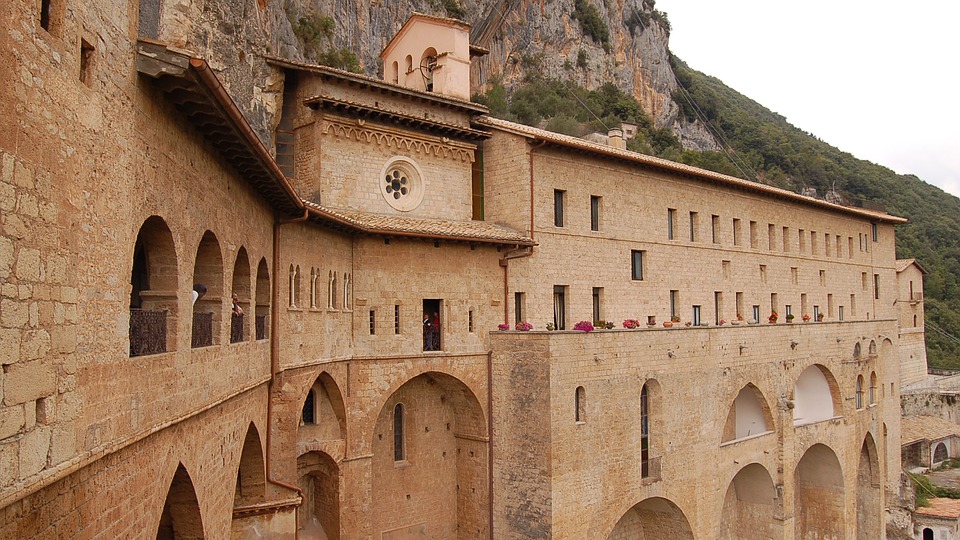
Architecture of the Benedictine’s Monastery . Subiaco, Italy.
Great thaumaturge
God gave abundantly the gift of miracles to his servant.
The water supply of three of the monasteries built in the high mountain imposed great work on the monks, who asked to change. That night, Benito prayed for a long time in that place, and before going down he marked a point with three stones. The next day he said to the monks:-
-Go and dig in the rocks where you find three overlapping stones.
This done, water gushed forth to this day.
Benedict had accepted as a monk a man of the Goth race, “poor in spirit.” One day he entrusted him with clearing the bushes by the side of the lake in order to plant a garden. The man cut the bushes with vigor, when the sickle fell away to fall further into the depths of the lake. Afflicted, he went to confess his “lack” to St. Mauro. Benito, put to the pair of what happened, went to the place and introduced the tip of the mango into the water. The sickle rose from the bottom of the lake and adhered again to the wood. – Take, work and do not distress yourself more – said the holy abbot to the monk. Many other miracles performed by God through his faithful servant. He healed the sick, saved many people from danger, drove out demons, made a monk walk on water, and even raised a dead child.
“I was present …”
Another unique gift that the Lord wanted to grant him was to be present in spirit with his spiritual children, where his vigilance as Father and Founder was necessary. Two episodes illustrate that prodigious privilege.
The rule prescribed that the monks did not eat or drink anything when they left the monastery to fulfill some commission. One day, two monks who stayed outside until very late, accepted the hospitality of a pious woman, who served them food and drink. Returning to the monastery, they went to ask for the blessing of Saint Benedict, who intervened:
-Where did you eat?
-Nowhere – they responded.
-Why do you lie? Did you not enter such a woman’s house and there you ate such and such a thing, and drank so many other times?
The two culprits fell at his feet and asked for forgiveness.
There was near Subiaco a community of virtuous women consecrated to the service of the Lord, to whom the saint often sent a monk for spiritual assistance. One day, the monk in charge of the mission accepted as a gift some handkerchiefs that he hid under his chest habit. Returning to the convent, he was stupefied when Saint Benedict admonished him severely because, having already forgotten the fault committed, he did not understand the reason for the reprimand. Then the holy abbot said to him: “Was I not present when you received from the handmaids of God the handkerchiefs that you kept on your chest?”
Target of persecutions
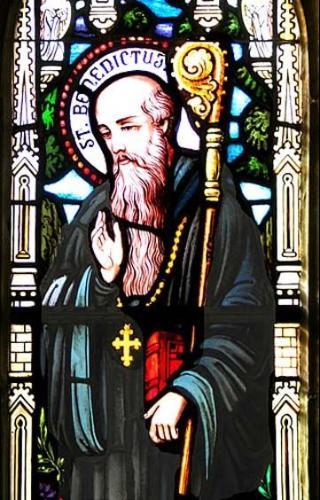
In all times and places, it is characteristic that the saints are targets of the incomprehension and hatred of the henchmen of the devil. The priest of a church near Subiaco, filled with envy, began to defame the way of life of Benito, trying to get away from his holy influence all those he could. Seeing his efforts frustrated, he sent Benito a poisoned bread to kill him. Failed also this attempt, went so far as to introduce in the garden of the monastery seven women of bad life, with the hope of corrupting the young monks.
Realizing that everything was done to personally persecute him, Benito appointed his representatives in each of the twelve monasteries founded, and retired from Subiaco.
Request your Saint Benedict Medal! Click here.
Monte Cassino, the path of restoration
He then marched to Cassino, a fortified citadel halfway between Rome and Naples. There was a pagan temple where the peasants of the region paid tribute to Apollo. Around the temple they carefully maintained some forests in which they offered sacrifices to the devil. Arriving at the place, the man of God destroyed the idol, fell the forests and transformed the building into a church erecting an oratory to Saint John the Baptist and another to Saint Martin of Tours.
Then, the construction of the famous monastery of Monte Cassino began, with the sole architect as the holy abbot and the monks themselves as builders.
The monastery of Monte Cassino was God’s response to the decadence of the world of his time. Example of patriarchal government and truly Christian society in the midst of barbarous nations, exerted an enormous influence on private and public customs, both in the spiritual order and in the temporal. Bishops, abbots, princes and men of all classes visited the saint, either to ask him for advice, either because of the friendship and esteem they felt for him. Powerful of the time, sometimes after conquests and victories, they went to take refuge secretly in Monte Cassino to imbibe a bit of the Benedictine spirit.
Thus, after the collapse of the Roman Empire, the path for renewal was discovered.
The Rule of the Monks
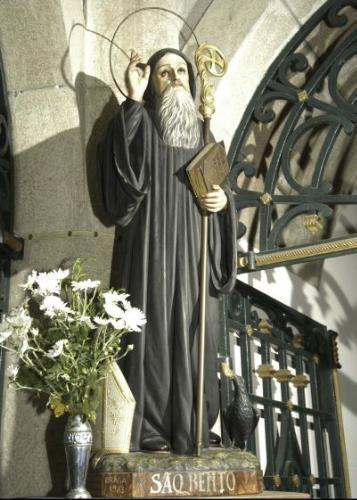
While raising the building of the new monastery, St. Benedict interiorly built the Benedictine work on a base more solid than rock, writing his inspired and famous Rule of the Monks. Its object was to detach the trivialities of the human heart, facilitating that the soul rose without obstacles to God, with an always serene way of proceeding, facing eternal life. With his well-known aphorism Ora et Labora (“Pray and work”), the Rule has the merit of harmonizing in the monk prayer and action, asceticism and mysticism.
The Rule written by Saint Benedict produced beneficial fruits throughout Christendom. This wise set of norms remained in force for eight centuries in almost all the monasteries of the West.
Holiness and spirit are worth more than Rule
However, what endowed the Benedictine Order with stability, strength of expansion and effectiveness in its civilizing action was, much more than the Rule, the sanctity and spirit of its founder. Inspired by the search for perfection in obedience, in the splendor of the liturgy, in the exquisite Gregorian chant and in the love of beauty placed at the service of God, the sons of Saint Benedict played a fundamental role in culture, customs and the institutions of the nations that made up medieval Christianity.
The Order of St. Benedict had an extraordinary development outbreak from the tenth century with the founding of the Abbey of Cluny. In its heyday, 17 thousand monasteries were subordinated to it. Entire nations were converted to the Christian faith thanks to disciples of the patriarch saint. Many famous universities – Paris, Cambridge, Bologna, Oviedo, Salamanca, Salzburg – were born as a result of Benedictine schools. Innumerable martyrs courageously gave their lives pronouncing the name of their founder. Pleiades of cardinals, bishops and holy doctors had him as their teacher. More than 30 popes followed his inspired rule. Finally, for 1,500 years countless souls consecrate themselves to God under the aegis of their holy institution.
Thus, the work of the father of western monasticism can be compared with all property to the mustard grain of the parable: “It is certainly the smallest of all seeds, but when it has grown it is the largest of the vegetables, and a tree is made , to the point that the birds of the sky come to shelter in their branches “(Mt 13,32).
He died standing up, as a brave warrior
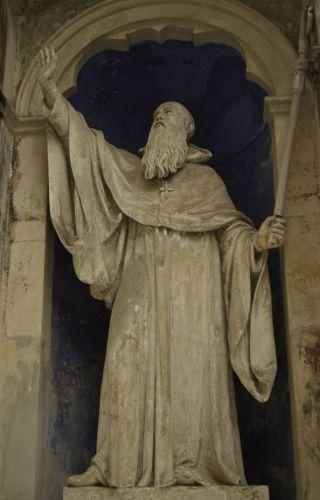
The holy abbot announced the date of his death months in advance. Six days before, he had his grave prepared. A violent fever soon followed. As the disease became more and more aggravated, the announced day was brought to the oratory where, strengthened by the reception of the Most Holy Eucharist and supported in the arms of his disciples, he died standing with his hands raised to heaven and his lips pronouncing the last sentence
It was March 21, 547. He was buried in the place where he had erected before the oratory of St. John the Baptist, in Monte Cassino.
